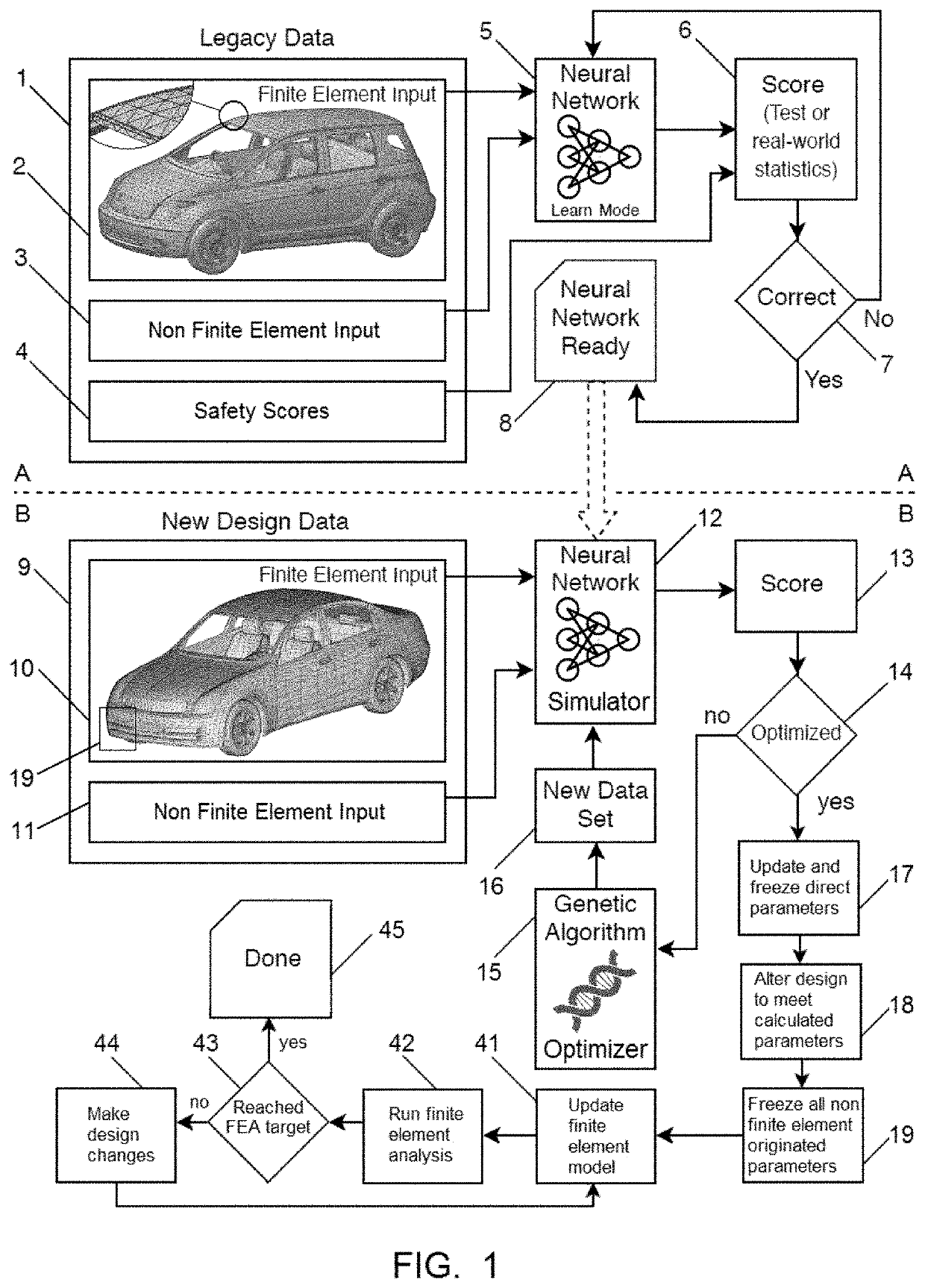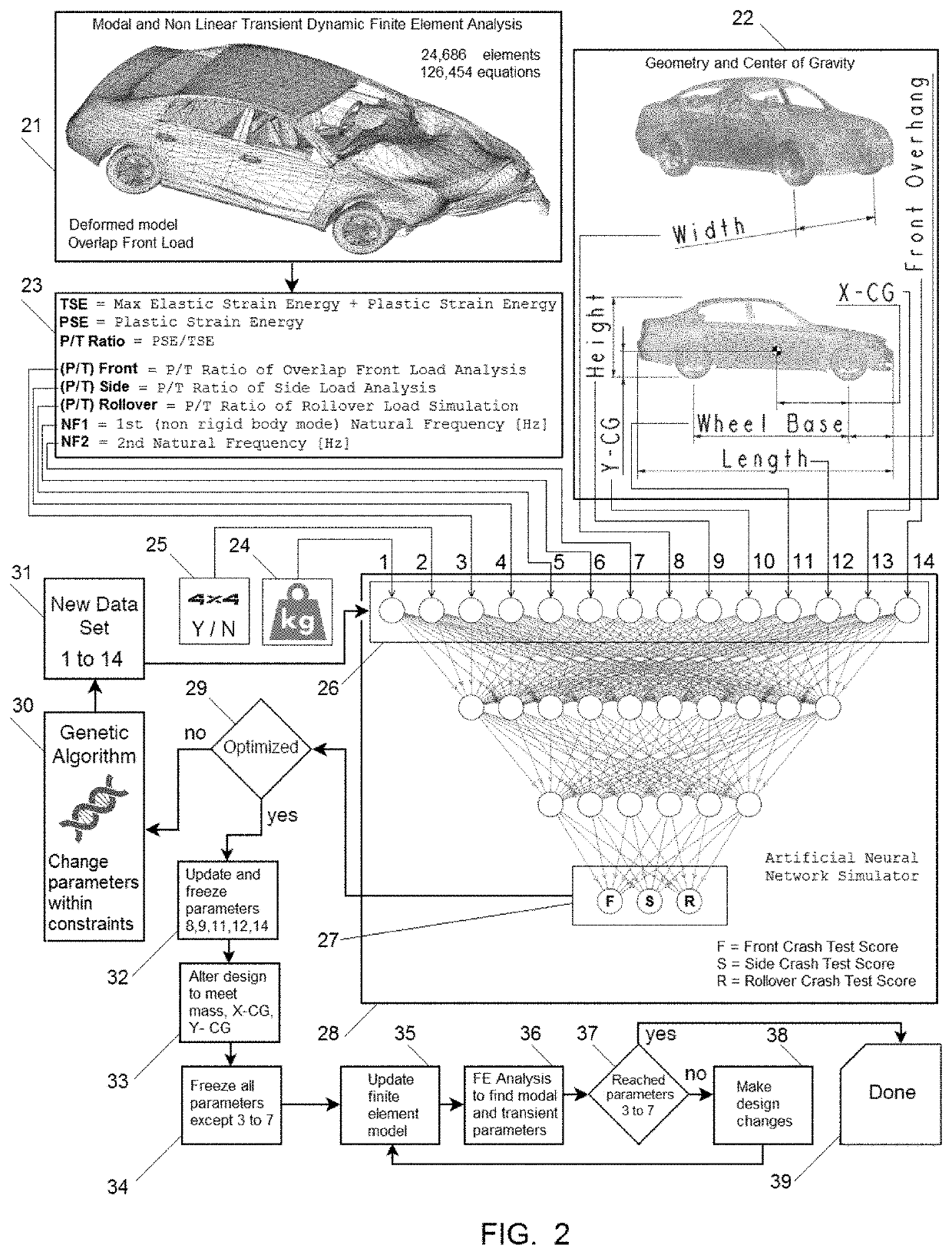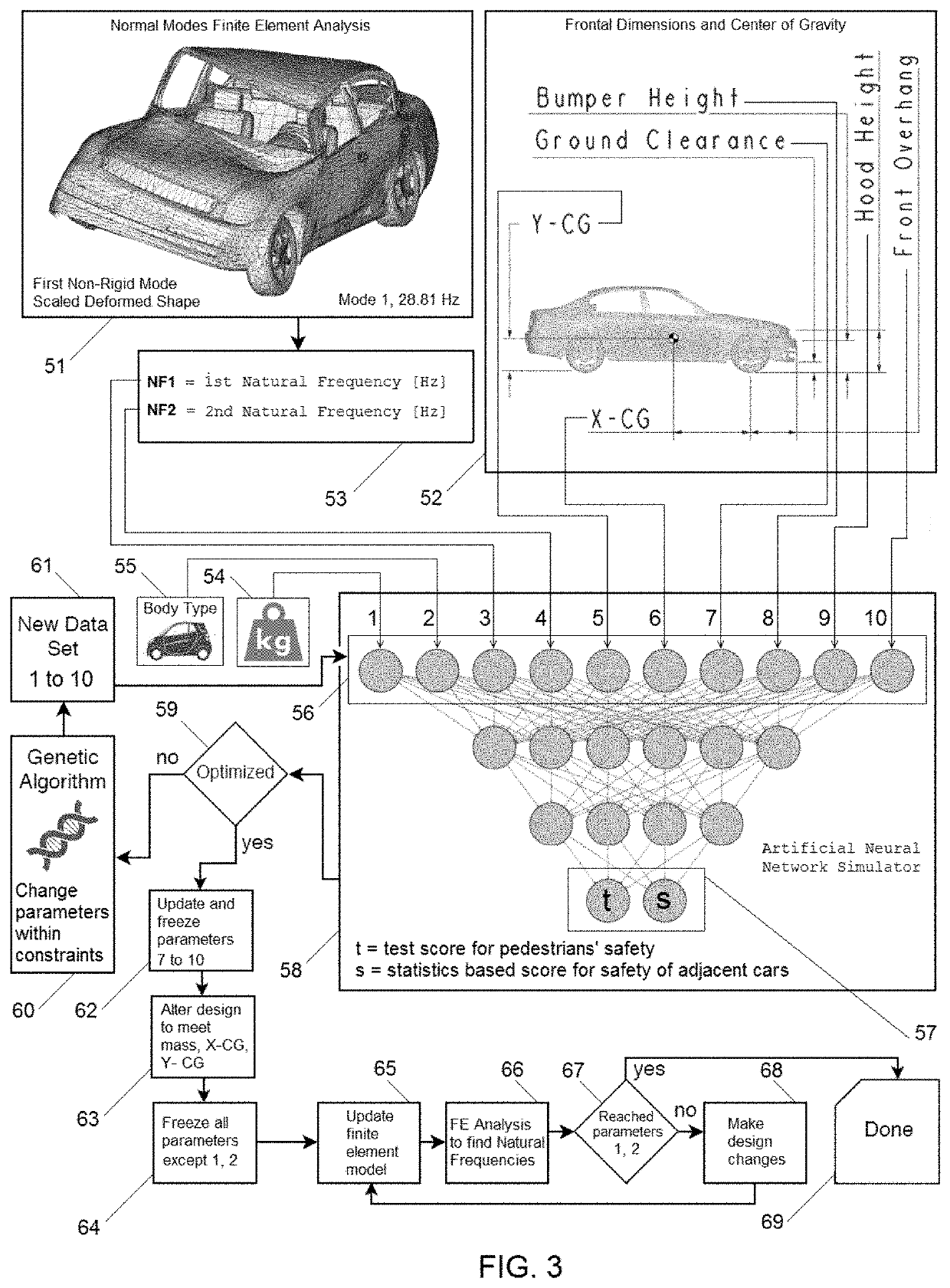Hybrid Finite Element and Artificial Neural Network Method and System for Safety Optimization of Vehicles
- Summary
- Abstract
- Description
- Claims
- Application Information
AI Technical Summary
Benefits of technology
Problems solved by technology
Method used
Image
Examples
example 1
[0091]FIG. 2 shows the first example. The finite element part in this example includes both a modal analysis and 3 nonlinear transient dynamic finite element analyses. As said, the method of this invention enables significant simplification of the finite element solution, due to the qualitative comparison approach which is obtained using an artificial neural network. The first aspect of simplification in this example is the mesh density. The mesh of the car to be simulated in this example includes around 25,000 elements and around 125,000 degrees of freedom. The car's mesh, prior to analysis, is shown in the previous figure—FIG. 1, and marked as item (10). The element types used are mainly parabolic triangle plate elements. It should be noted that such car's assembly could be meshed with more than 500,000 elements and millions of equations for a standalone analysis, so the mesh used here is relatively course and supports a very fast solution, all according to the method of the inven...
example 2
[0129]FIG. 3 shows the 2nd example. There are two optimization targets (57) in this example, indicated as (t): optimizing the car's design for pedestrians' safety test as indicated by crash test scores; and (s): optimizing the car's design for statistics-based safety score for passengers of adjacent cars which are involved in a crash situation with the optimized car. The second goal (s) is an example for the capability of the invention to simulate and optimize a new car based on safety aspects which cannot be simulated or tested using any existing method.
[0130]The finite element mesh is identical to the one used in example 1. However, only one analysis is performed for this example: a normal mode analysis of the unconstraint model. The first non-rigid-mode frequency in this example is 28.81 Hz, as shown in the deformed shape display (51). This frequency is marked as NF1 (53). Similar to the previous example, the required output from this modal analysis is the first two non-rigid-bod...
example 3
[0150]FIG. 4 shows example 3. There is only one optimization target (87) in this example, indicated as R: optimizing the car's design for rollover crash safety based on statistics data. This example demonstrates the ability to bypass test scores and optimize the car based on real-world data.
[0151]The finite element mesh is identical to the one used in examples 1 and 2. Similar to example 2, only one analysis is performed for this example: a normal mode analysis of the unconstraint model. The first non-rigid-mode frequency is marked as NF1 (83) and is one of the finite-element-related inputs (3) to be used for the input layer (85) of the neural network (86). However, in this example, additional output, which requires some additional postprocessing, is extracted from this analysis. The goal is a rollover crash safety, and, according to design experience as well as to common sense, the dynamic behavior of the frame of the windshield during such rollover crash situation is important. Fo...
PUM
 Login to View More
Login to View More Abstract
Description
Claims
Application Information
 Login to View More
Login to View More - R&D
- Intellectual Property
- Life Sciences
- Materials
- Tech Scout
- Unparalleled Data Quality
- Higher Quality Content
- 60% Fewer Hallucinations
Browse by: Latest US Patents, China's latest patents, Technical Efficacy Thesaurus, Application Domain, Technology Topic, Popular Technical Reports.
© 2025 PatSnap. All rights reserved.Legal|Privacy policy|Modern Slavery Act Transparency Statement|Sitemap|About US| Contact US: help@patsnap.com



